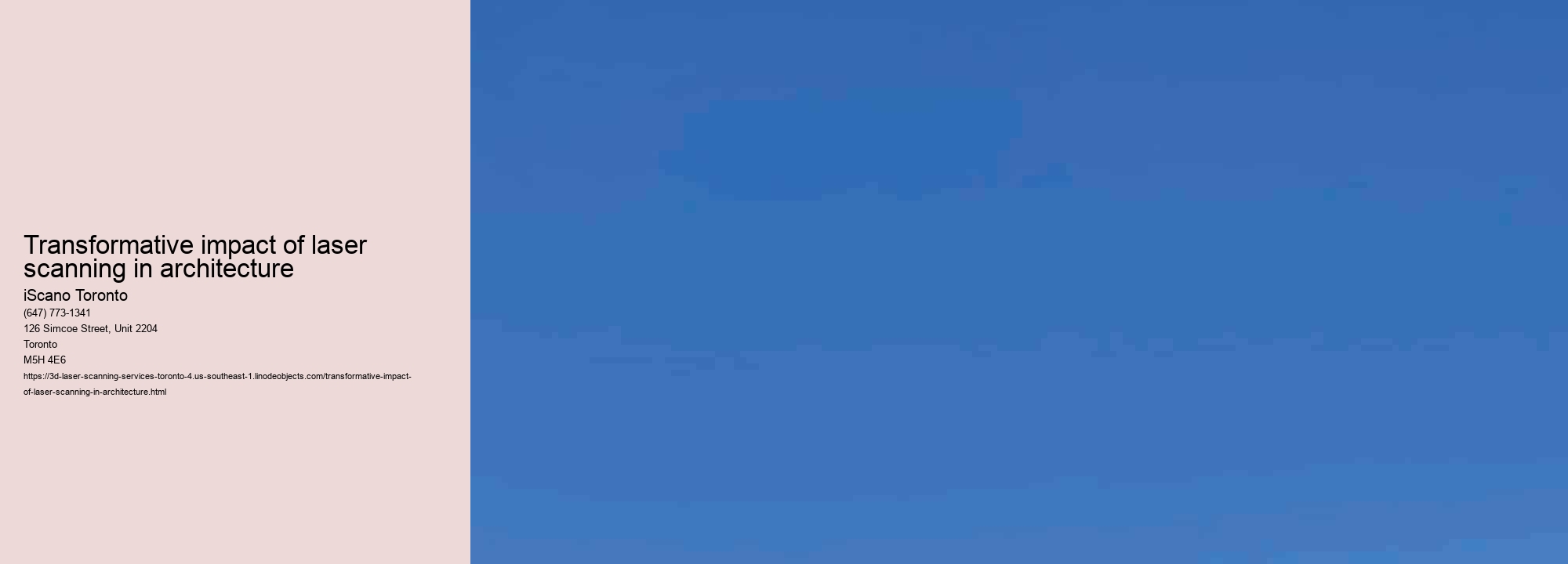Navigating the Future: Exactly How 3D Laser Scanning Services Are Transforming Industries
Transformative impact of laser scanning in architecture .Intro
In the realm of technological development, couple of advancements have actually been as transformative as 3D laser scanning services. These innovative tools have transformed industries by providing exceptional accuracy, efficiency, and flexibility. From design to archaeology, from manufacturing to medication, the applications of 3D laser scanning are large and constantly increasing. In this article, we delve into the details of this modern technology and explore just how it is reshaping the landscape of different markets.
Comprehending 3D Laser Scanning
At its core, 3D laser scanning is a non-contact, non-destructive technology that records the shape, size, and information of items or atmospheres by sending out laser beam of lights. These beam of lights bounce off the surface areas they come across, and the scanner gauges the time it considers each beam of light to return, thereby producing a point cloud—-- a collection of numerous data factors that represent the item'' s geometry in three dimensions.
The Benefits of 3D Laser Scanning
One of the main benefits of 3D laser scanning is its unmatched accuracy. Conventional approaches of dimension frequently fall brief in capturing complicated geometries or detailed information, bring about inaccuracies and inefficiencies. With 3D laser scanning, nevertheless, also the most elaborate surface areas can be recorded with precision down to the millimeter, making certain that every detail is made up.
Additionally, 3D laser scanning is unbelievably efficient. Unlike traditional evaluating strategies that can be time-consuming and labor-intensive, laser scanning permits fast information procurement. A single scan can record millions of data factors in a matter of mins, considerably reducing the moment and sources needed for information collection.
Another considerable advantage of 3D laser scanning is its non-destructive nature. Unlike physical dimensions or invasive inspection techniques, laser scanning does not need straight contact with the things being scanned, maintaining its honesty and lessening the threat of damages.
Applications Across Industries
The convenience of 3D laser scanning has actually brought about its prevalent fostering across a myriad of markets. In design and building and construction, as an example, laser scanning is utilized for as-built paperwork, clash discovery, and constructing details modeling (BIM). By accurately catching status quo, engineers and designers can enhance the design process, lessen mistakes, and reduce costly rework.
In the manufacturing field, 3D laser scanning plays a critical role in quality control, reverse engineering, and quick prototyping. By exactly recording the dimensions of elements and items, producers can determine flaws, enhance production procedures, and bring products to market much faster.
The effect of 3D laser scanning prolongs beyond the realm of industry and into areas such as archaeology, forensics, and healthcare. Archaeologists make use of laser scanning to develop comprehensive 3D models of archaeological sites and artifacts, enabling virtual preservation and evaluation. In forensics, laser scanning is made use of to record criminal activity scenes, collect evidence, and reconstruct accidents with unrivaled accuracy. In medical care, 3D laser scanning enables custom-made prosthetics, orthotics, and implants tailored to the special makeup of each client.
Future Fads and Innovations
As modern technology continues to advancement, the future of 3D laser scanning holds tremendous assurance. One arising pattern is the integration of artificial intelligence (AI) and artificial intelligence formulas right into scanning software, making it possible for automated feature acknowledgment, information analysis, and modeling. This assimilation not only enhances the rate and accuracy of scanning processes but likewise opens new possibilities for data-driven insights and decision-making.
In addition, developments in hardware, such as the advancement of portable and mobile scanning gadgets, are making 3D laser scanning more accessible and mobile than ever before. These compact and light-weight scanners empower users to catch information in remote or challenging atmospheres, further increasing the reach of this transformative modern technology.
Conclusion
To conclude, 3D laser scanning services are reinventing markets around the world, using unmatched precision, effectiveness, and convenience. From architecture to archaeology, from producing to medication, the applications of 3D laser scanning are unlimited. As modern technology remains to progress, the future holds also greater promise, with innovations such as AI assimilation and portable scanning devices positioned to additional broaden the capacities of this transformative technology. In browsing the future, 3D laser scanning will undoubtedly continue to be at the center of technology, reshaping markets and driving progress in the years to come.
